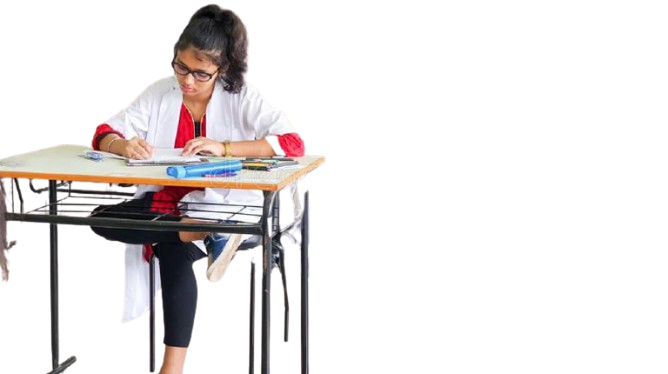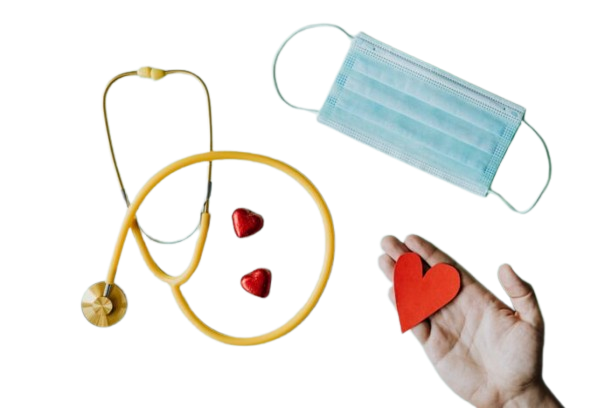Short Questions
i. Explain why the temperature remains constant during the phase change from ice to water.
Answer:
The temperature remains constant during the melting of ice because the heat energy absorbed is used to break the intermolecular forces between solid particles instead of increasing kinetic energy.
Key Words Used:
Phase change, constant temperature, latent heat, intermolecular forces
ii. What is the name given to the phase change when a solid is converted directly to a gas?
Answer:
The process is called sublimation.
Key Words Used:
Sublimation, solid to gas, phase change
iii. What is the difference between evaporation and boiling?
Answer:
Evaporation occurs at any temperature from the surface of a liquid, while boiling occurs at a fixed temperature and throughout the liquid.
Key Words Used:
Evaporation, boiling, surface, fixed temperature
iv. Interpret a heating curve for water, identifying key phase changes.
Answer:
The heating curve shows temperature rising during solid, liquid, and gas phases, and remaining constant during melting and boiling points where phase changes occur.
Key Words Used:
Heating curve, melting point, boiling point, phase changes, temperature plateau
v. Explain the effect of increasing temperature on the pressure of a gas in a sealed container.
Answer:
Increasing temperature increases the kinetic energy of gas molecules, leading to more frequent and forceful collisions with the container walls, which increases pressure.
Key Words Used:
Kinetic energy, gas molecules, collisions, pressure increase, sealed container
vi. How does increasing the external pressure affect the boiling point of a liquid?
Answer:
Increasing external pressure raises the boiling point of a liquid because more energy is required for the vapor pressure to match the external pressure.
Key Words Used:
External pressure, boiling point, vapor pressure, energy requirement
vii. Describe how molecular mass influences the rate of diffusion.
Answer:
Gases with lower molecular mass diffuse faster than gases with higher molecular mass, as described by Graham’s law of diffusion.
Key Words Used:
Molecular mass, diffusion, Graham’s law, lighter gases
viii. Give an example of sublimation and explain its practical application.
Answer:
Example: Dry ice (solid CO₂) sublimates into gas.
Application: Used in fog machines and for preserving frozen items during shipping.
Key Words Used:
Sublimation, dry ice, fog machine, preservation
ix. Why is the diffusion of gases faster at higher temperatures?
Answer:
At higher temperatures, gas particles gain more kinetic energy and move faster, leading to a higher diffusion rate.
Key Words Used:
Kinetic energy, temperature, faster movement, diffusion rate
x. How does Avogadro’s law relate to the volume and number of moles of gas?
Answer:
Avogadro’s law states that equal volumes of gases at the same temperature and pressure contain an equal number of moles.
Key Words Used:
Avogadro’s law, volume, moles, temperature, pressure
Long Answer Questions
i. Describe in detail the kinetic particle theory and how it explains the phase changes of melting, freezing, boiling, and condensation.
Answer:
The kinetic particle theory explains that matter is made up of small particles (atoms or molecules) that are in constant motion. The behavior of these particles changes with temperature and energy:
- Melting: When a solid is heated, its particles gain kinetic energy and vibrate more vigorously until they overcome the forces holding them together, causing a change to liquid.
- Freezing: As a liquid cools, particles lose energy, move slower, and eventually arrange into fixed positions to form a solid.
- Boiling: In liquids, increasing temperature causes particles to move faster. At the boiling point, particles throughout the liquid have enough energy to form gas bubbles and escape.
- Condensation: When gas cools, particles lose kinetic energy, move closer together, and turn into liquid due to attractive forces.
Key Words Used:
Kinetic particle theory, motion, melting, freezing, boiling, condensation, energy, temperature, phase change
ii. Interpret a cooling curve, identifying and explaining the significance of the flat regions on the curve.
Answer:
A cooling curve shows how the temperature of a substance decreases over time as heat is removed. It consists of sloped and flat regions:
- Sloped regions: Indicate temperature decrease in a single phase (e.g., gas cooling to liquid, or liquid cooling to solid).
- Flat regions (plateaus): These occur during phase changes (condensation or freezing) where temperature remains constant even though heat is being removed. During this time, energy is released as intermolecular forces form.
Key Words Used:
Cooling curve, temperature, phase change, freezing, condensation, energy release, flat regions, heat removal
iii. Explain how diffusion works in gases and discuss the factors affecting the rate of diffusion, including molecular mass and temperature.
Answer:
Diffusion is the movement of gas particles from an area of high concentration to an area of low concentration, resulting in uniform distribution. In gases, particles move randomly and rapidly, allowing them to spread out and mix.
Factors affecting diffusion:
- Molecular Mass: According to Graham’s law, lighter gases diffuse faster than heavier ones.
- Temperature: Higher temperatures increase particle kinetic energy, which speeds up diffusion.
- Pressure and Medium: Diffusion is faster at lower pressures and in less dense mediums.
Key Words Used:
Diffusion, gas particles, molecular mass, temperature, kinetic energy, Graham’s law, concentration gradient
🔍 THINK TANK Questions & Answers
1. Analyze the impact of altitude on the boiling point of water and how it affects cooking times. Provide a detailed explanation based on kinetic particle theory and external pressure.
Answer:
At higher altitudes, atmospheric pressure is lower. According to the kinetic particle theory, boiling occurs when the vapor pressure of a liquid equals the external (atmospheric) pressure. At high altitudes, water boils at a lower temperature because less energy is needed to match the reduced pressure. However, since the temperature is lower, cooking food (which relies on high-temperature boiling water) takes longer.
Example: At Mount Everest, water boils around 70°C, not 100°C, so food takes more time to cook.
Key Words Used:
Altitude, atmospheric pressure, vapor pressure, boiling point, kinetic particle theory, cooking time
2. Discuss the importance of understanding diffusion rates in the development of pharmaceuticals.
Answer:
Understanding diffusion rates is crucial in pharmaceutical development because drug molecules must diffuse through biological membranes (like cell walls) to reach their target sites. Faster diffusion means quicker drug action, which is vital for treatments like pain relief or emergency medication. Factors such as molecular size, solubility, and temperature influence diffusion.
Example: Inhalers for asthma use gases with high diffusion rates for rapid relief.
Key Words Used:
Diffusion, pharmaceuticals, membranes, drug delivery, molecular size, solubility, absorption
3. Evaluate the environmental and practical implications of using sublimation in various industries, such as air fresheners and 3D printing, considering both benefits and potential drawbacks.
Answer:
Sublimation is used in several industries due to its clean and residue-free phase change:
- Benefits:
- Air fresheners: Use sublimation to slowly release fragrance into the air without melting.
- Freeze drying: Used in food and pharmaceuticals to preserve without heat damage.
- 3D Printing: Sublimation materials enable precise layer-by-layer building.
- Drawbacks:
- Sublimation materials can be costly.
- Some sublimates (like dry ice) can cause environmental or safety issues if not handled properly.
Key Words Used:
Sublimation, industry, air freshener, 3D printing, freeze drying, environment, benefits, drawbacks



